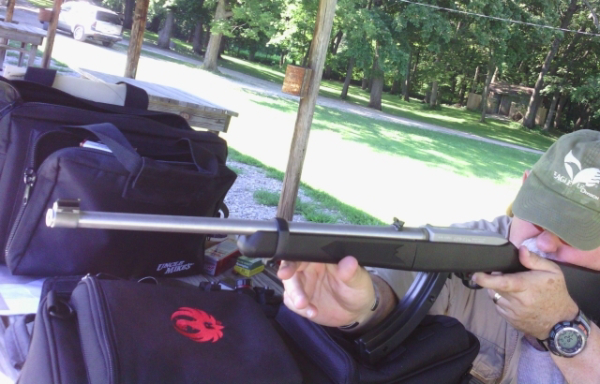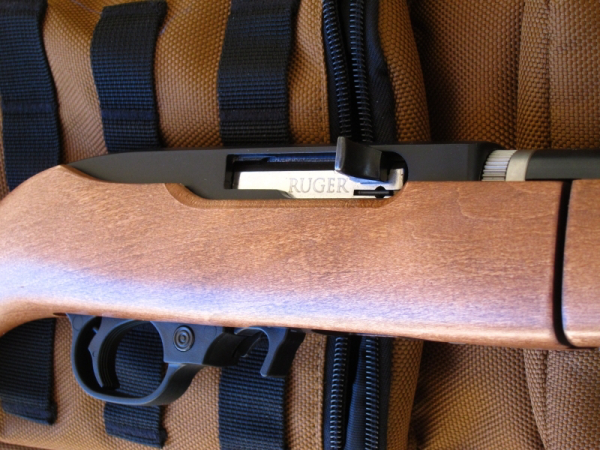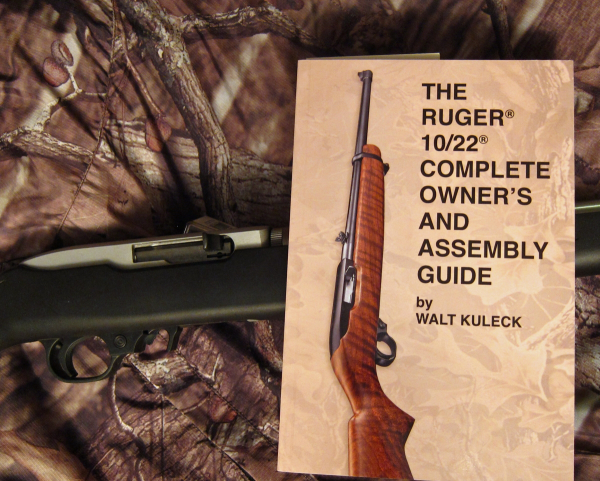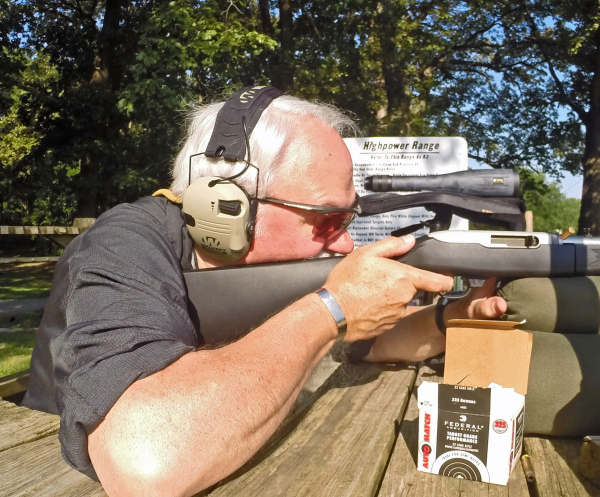
One of the most common 22 rifles in history is the Ruger 10/22. Across myriad variants and now including “clone” actions made by others, the simple-to-manufacture design is an example of modern firearm manufacture: it’s low-cost, reliability and simplicity make it the action-shooter of choice for the various rimfire games. Long before those, it was a superb field rifle.
And I knew nearly nothing about it.
It originated toward the end of the midpoint of my childhood. It looked “okay,” but had some silly rotary magazine that “wasn’t cool” like the stick mag of the M1928 Thompson. The rear sight mounted on the barrel, typical of the 22 rifle of the era was neutral; it’d win no matches, but it was likely minute-of-soda-can at the strip pits where we shot.
And, I confess, I gleefully ignored it preferring the strange space-age looking Nylon 66 Dad brought home.
I let it go as I moved into the handgun world. Entering a more serious firearms occupation, I left 22s behind. Since I “pulled the pin,” 22s drew me back. I had the opportunity to use a 10/22 Takedown model and since have been gifted a commemorative version of that same gun.

I wrote about that “first 10/22” in 2016:
“I've been working with a neat little device that's handy to have: the Ruger 10/22 Takedown model. Stainless steel with nylon furniture, it's more weather resistant than blue steel and walnut. One of the most popular .22 rifles in history in standard form -- and what that really is these days is hard to tell with all the variations -- it has broad parts availability and is easy to keep running.
“You can carry a fairly large amount of ammo with little weight can have magazines pre-loaded without loading the chamber. You can see the bag the rifle comes in from the factory -- and it's handy for packing the disassembled rifle when it's time to leave. Being a .22 rifle, it doesn't create the knee-jerk 'fear' reaction of the AR15.
“The long magazine is shown, but flush-seated 10-round magazines are broadly available and can be found on sale.
“For more information, see their web site.”

Why bring it up now? I’ve collected a book, The Ruger 10/22 Complete Owner’s and Assembly Guide by Walt Kuleck. This book would have made my understanding of the 10/22 a lot easier early on – and it should be included with every 10/22 sold.
He quickly – and completely – takes the reader through Ruger’s company history, a key to understanding their firearms design and manufacturing philosophy. He shows how Bill Ruger’s affiliation with Auto Ordnance early on formed part of the concept that became the 10/22. Going from history to showing how the gun came from previous carbines (as well as the Deerstalker) to explaining aspects of operation, ammunition, maintenance and disassembly/assembly, the book is “all about” the 10/22.
No book on the 10/22 would be complete without discussing the customizing of the gun and he does that here as well. It is the essential resource for the Ruger 10/22. If you own one of the close-copies made by another company – Walt’s book is still an ‘essential.’ Buy it, you’ll like it.

Now, my 10/22 TD – thus far my favorite class of the little gun – is absolutely stock. I’ve not changed out the trigger, sights – I even use the standard 10-round rotary magazine preferring them to the longer magazines. I recently mentioned the 10/22 recently here and took it back out when I was using the high power range for some 100-yard work.
Using Federal Auto Match 22 LR and shooting from a seated bench rest, I printed a near-vertical 7 ½” string using the gun’s iron sights. I was shooting off the left side and noted that seven of the ten rounds printed into 4-inches.
Not good, you say? Oh, I think an iron-sighted take-down carbine, weighing less than five pounds, shooting bulk-packed 22 LR ammo performed quite well. Fifty yards is my maximum likely range for this class of firearm, but you never know what it’ll do until you try.
- - Rich Grassi